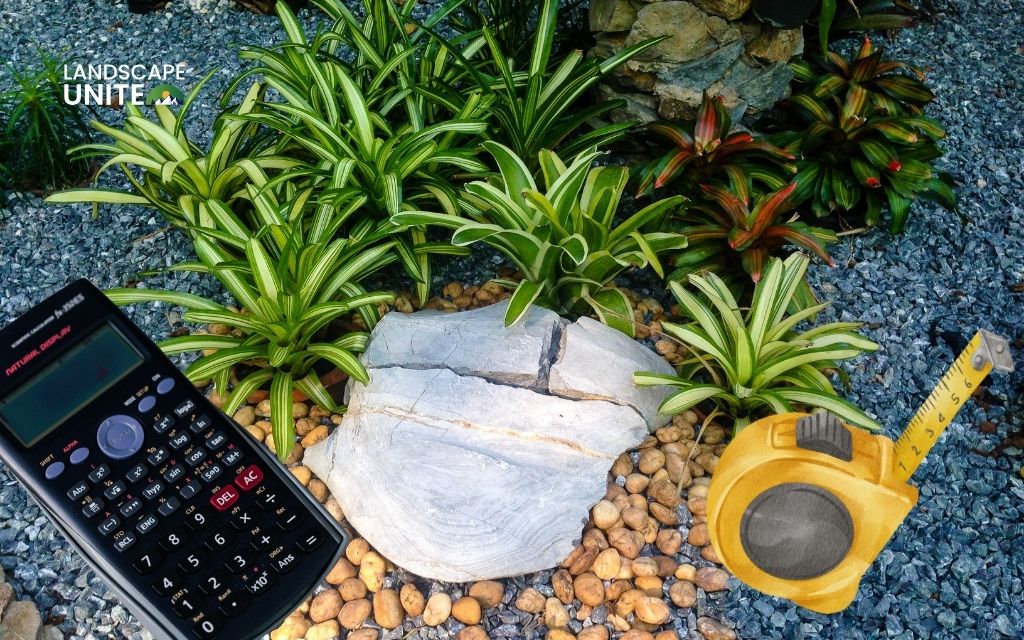Countless homeowners wake up to the frustrating reality of lawn fungus appearing seemingly overnight. The truth is, many common lawn problems that homeowners attribute to drought, pet damage, or fertilizer burn actually stem from fungal infections.
These microscopic organisms can quickly transform a healthy, green lawn into a patchy, discolored eyesore that becomes the neighborhood’s talking point – for all the wrong reasons.
This comprehensive guide is designed to help you identify, treat, and prevent lawn fungus effectively, giving you the knowledge and confidence to restore your yard to its former glory.
Whether you’re dealing with fescue lawn fungus, battling stubborn brown patch disease, or trying to prevent future outbreaks, this article provides practical, science-backed solutions. Read now!
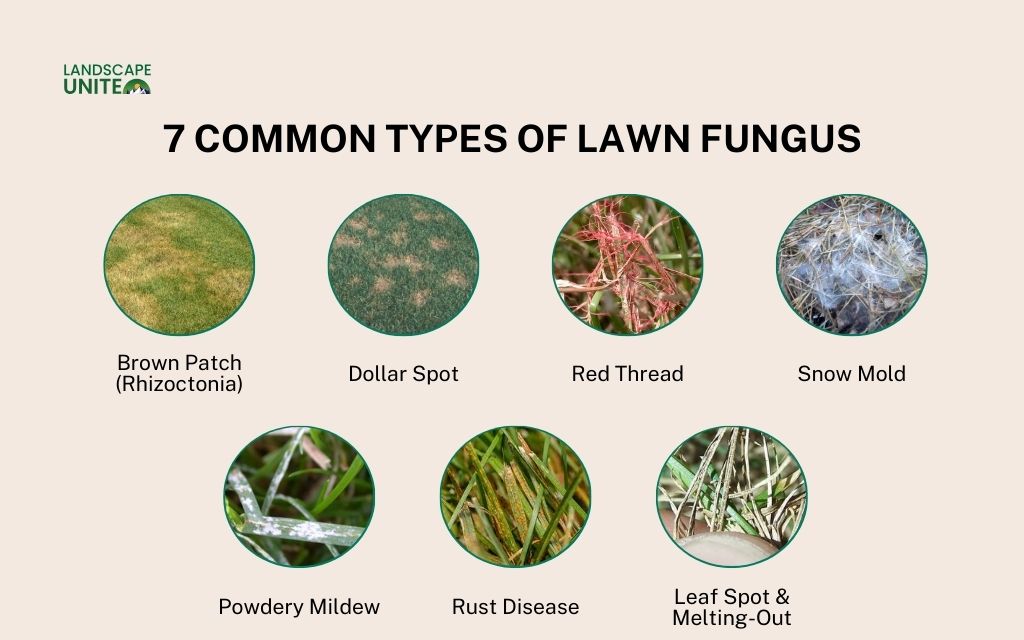
What is lawn fungus?
Lawn fungus refers to various fungal organisms that can either benefit or harm your grass.
While many fungi play crucial roles in soil health and nutrient cycling, certain pathogenic fungi can cause significant damage to your lawn when conditions are right.
The key factors that encourage harmful fungus in lawn environments include:
- Excessive moisture
- Poor air circulation
- Overwatering, high humidity
- Temperature fluctuations
- Stressed grass
Understanding these conditions is your first step toward both treatment and prevention, as most fungal diseases thrive when your lawn is weakened or when environmental conditions create the perfect storm for fungal development.
7 common types of lawn fungus
Identifying the specific type of lawn grass fungus affecting your yard is crucial for choosing the right treatment approach. Each fungal disease has distinct visual characteristics, preferred grass types, and ideal growing conditions that can help you make an accurate diagnosis.
Brown Patch (Rhizoctonia)
Brown Patch appears as circular brown or tan spots ranging from a few inches to several feet in diameter. The affected areas often have a distinctive “smoke ring” or darker border around the perimeter, with the center sometimes showing signs of recovery.
Tall fescue, fine fescue, and ryegrass are most susceptible to brown patch, especially when nitrogen levels are high and air circulation is poor. The disease can appear overnight during periods of extended leaf wetness, making lawns that receive evening watering or heavy dew particularly vulnerable.
Dollar Spot
Dollar spot creates small, round lesions about the size of a silver dollar, appearing as bleached or straw-colored patches scattered throughout your lawn. Individual grass blades show distinctive hourglass-shaped lesions with light tan centers and reddish-brown borders.
This disease commonly affects bentgrass, bermudagrass, and Kentucky bluegrass, particularly in lawns with low nitrogen levels and moderate temperatures between 60-80°F.
Dollar spot thrives in conditions with high humidity, cool nights, and warm days, often appearing in late spring through early fall.
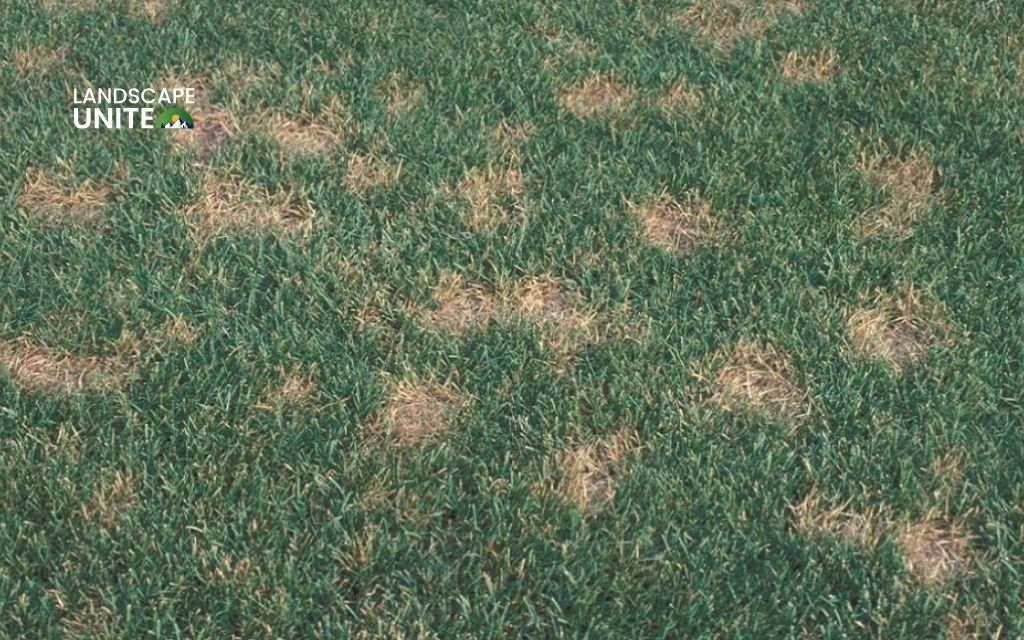
Red Thread
Red thread disease creates irregular patches of pink or red-tinged grass with distinctive thread-like growths extending from grass blade tips. These red, stringy structures give the disease its name and make identification relatively straightforward.
Fine fescue, ryegrass, and bentgrass are most susceptible during cool, wet periods in spring and fall when temperatures range between 60-75°F.
Snow Mold
Snow mold appears as gray, white, or pinkish circular patches that become visible as snow melts in early spring. The affected areas may have a web-like mycelium covering that disappears as conditions dry out, leaving behind matted, dead grass.
Both gray snow mold and pink snow mold affect most cool-season grasses, particularly in areas with prolonged snow cover or where snow piles have been placed.
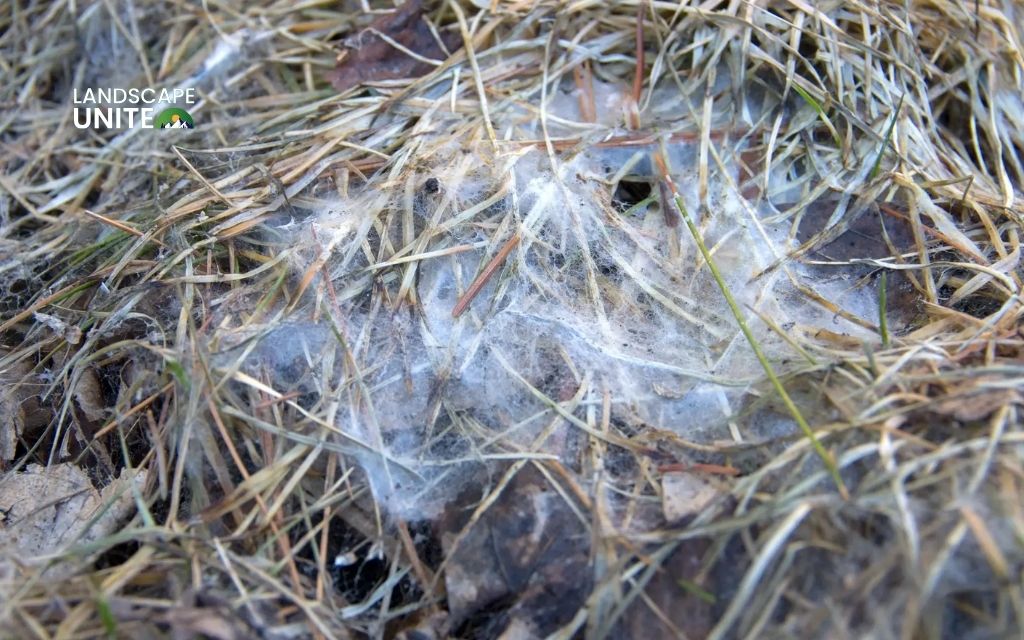
Powdery Mildew
Powdery mildew appears as a white fungus on lawn surfaces, creating a dusty, flour-like coating on grass blades. Affected areas may appear grayish-white from a distance and feel powdery to the touch. This disease primarily affects Kentucky bluegrass and fine fescue in shaded areas with poor air circulation.
Rust Disease
Rust disease creates orange, yellow, or reddish-brown spores that easily rub off on shoes, clothing, or lawn equipment. Affected grass blades develop small pustules that release these colored spores when disturbed. Kentucky bluegrass, ryegrass, and tall fescue are most susceptible during late summer and early fall when temperatures range between 68-85°F.
Leaf Spot & Melting-Out
Leaf spot begins as small, dark brown or purple spots on grass blades that gradually expand and develop light-colored centers with dark borders. As the disease progresses to the melting-out phase, entire grass plants may thin and die, creating irregular bare patches.
What causes lawn fungus?
Most lawn fungi are opportunistic, meaning they take advantage of stressed grass and favorable environmental conditions to establish and spread.
Overwatering or watering at night
Overwatering or watering at night is the leading cause of fungal problems in home lawns.
When grass blades remain wet for extended periods, especially overnight, fungal spores can germinate and infect healthy tissue.
Evening watering is particularly problematic because it extends the duration of leaf wetness through the night when temperatures are cooler and humidity is higher.
Poor soil drainage
Poor soil drainage or compaction creates waterlogged conditions that stress grass roots and create ideal environments for soil-borne fungi.
Compacted soil prevents proper water infiltration and air movement, leading to standing water and anaerobic conditions that favor harmful fungal development while suppressing beneficial soil microorganisms.
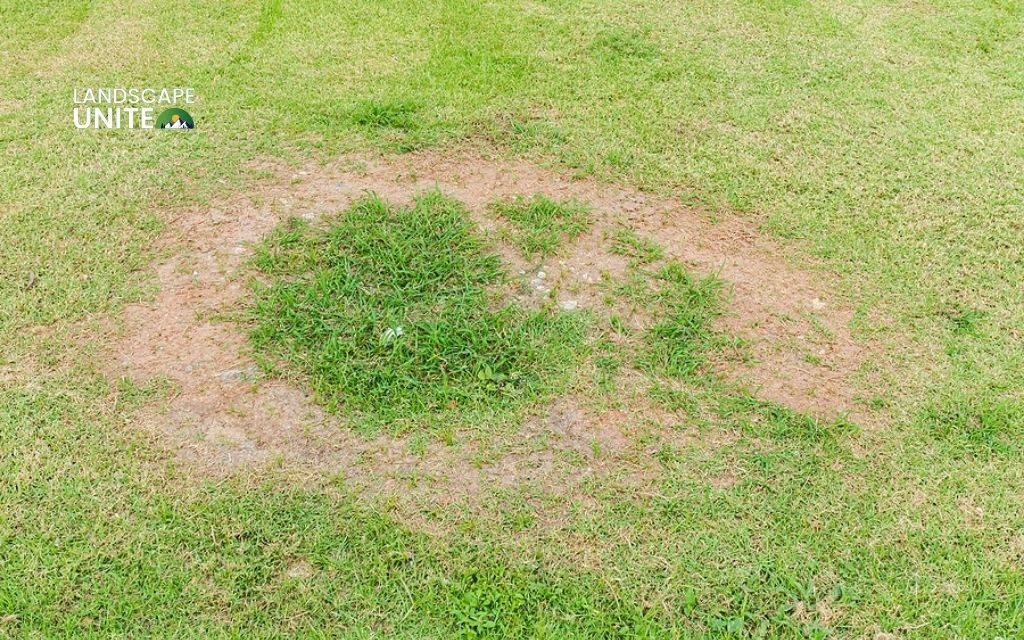
Overfertilization or lack of nutrients
Overfertilization or lack of nutrients can both contribute to fungal problems, but in different ways.
Excessive nitrogen promotes rapid, soft growth that’s more susceptible to disease, while nutrient deficiencies weaken grass and reduce its natural disease resistance.
The timing and type of fertilizer application also matter, with quick-release nitrogen during humid conditions being particularly problematic.
Improper mowing practices
Improper mowing practices, especially cutting grass too short, weaken plants and create entry points for fungal infections.
Dull mower blades create ragged cuts that are slow to heal, while mowing wet grass can spread fungal spores throughout your lawn. Removing more than ⅓ of the grass blade length at once also stresses plants and reduces their disease resistance.
Shade and poor airflow
Shade and poor airflow create microclimates that favor fungal development by maintaining higher humidity levels and slower drying times.
Dense tree canopies, solid fences, and closely spaced structures can all contribute to poor air circulation that allows humidity to build up around grass plants.
How to treat fungus in my lawn
Treating fungus in the lawn requires a three-step approach: identification, cultural adjustments, and fungicide application when necessary. Quick action prevents spread and minimizes damage.
Step 1: Identify the type of fungus
Use the visual cues from the previous section to identify your specific fungal problem. Look for distinctive patterns like circular brown patches (brown patch), small dollar-sized spots (dollar spot), or red threads on grass tips (red thread).
For accurate diagnosis, take clear photos and contact your local cooperative extension office or consult a certified lawn care professional, especially for severe or recurring infections.
Step 2: Adjust lawn care practices
Immediate actions:
- Stop watering for 3-5 days to let affected areas dry out
- Water only in early morning (4-8 AM) going forward
- Raise mowing height to reduce stress
- Remove debris and improve air circulation
- Avoid walking on infected areas when wet
How to treat fungus in my lawn effectively starts with these cultural changes, which often resolve minor infections without chemicals.
Step 3: Apply fungicide (if needed)
Use fungicides for severe infections or when cultural controls fail.
Effective options include: Propiconazole, azoxystrobin, or myclobutanil (available at garden centers)
Application tips: Apply during calm weather, follow label rates exactly, avoid rain for 24 hours
When to call professionals:
- Large infected areas (over 25% of lawn)
- Multiple fungal diseases present
- Recurring problems despite treatment
- Uncomfortable with chemical applications

How to prevent lawn fungus (long-term health)
Prevention is the most effective strategy for managing lawn fungus problems permanently. Here are 5 essential practices for long-term lawn health:
- Master your watering schedule: Water deeply and infrequently in early morning hours (4-8 AM only). Allow soil to dry between watering cycles. Install rain gauges to monitor natural precipitation and adjust irrigation accordingly. Never water in the evening or at night.
- Use proper fertilization practices: Apply slow-release, balanced fertilizers that support steady growth without creating soft, disease-prone tissue. Follow soil test recommendations to maintain optimal nutrient levels. Avoid high-nitrogen, quick-release fertilizers during humid conditions. Time applications based on your grass type’s active growing season.
- Perform annual core aeration: Aerate compacted soil during your grass’s peak growing season to improve drainage, water infiltration, and root development. This relieves soil compaction and creates better air movement around grass roots.
- Choose disease-resistant grass varieties: When overseeding or establishing new areas, select modern cultivars bred for disease resistance. Disease-resistant grasses naturally fight off fungal infections while maintaining attractive appearance and performance.
- Maintain dense, healthy turf: Overseed thin areas annually to maintain thick grass coverage that prevents fungal spores from reaching soil. Dethatch when thatch layer exceeds ½ inch. Remove fallen leaves and debris promptly. Keep grass at proper mowing heights and never remove more than one-third of blade length at once.
Conclusion
Lawn fungus is completely treatable and preventable when you understand the causes and take proper action. The key to success lies in quick identification, immediate cultural adjustments, and consistent long-term prevention practices.
Remember that most fungal problems stem from simple issues like overwatering, poor air circulation, or stressed grass. By implementing the prevention strategies outlined in this guide, you can enjoy a beautiful, disease-free lawn year-round.
Want to learn more about creating the perfect lawn?
Explore our comprehensive library of garden articles for expert tips on fertilization, seasonal maintenance, grass selection, and troubleshooting common lawn problems on our gardening hub.
Frequently asked questions (FAQs)
How do I know if my lawn has fungus or just drought stress?
Fungal infections create distinct patterns with defined borders and specific shapes (circular, irregular patches), while drought stress causes general browning that starts in thin areas and affects the lawn uniformly. Look for distinctive features like smoke rings, red threads, or white powdery coatings that clearly indicate fungal problems.
Can lawn fungus go away on its own?
Minor infections may resolve when environmental conditions improve, but most established fungal diseases require active treatment to prevent spread and permanent damage. Fungal spores remain in soil even after symptoms disappear, ready to reinfect when conditions favor their development.
Is it safe to walk on fungus-infected grass?
Yes, it’s safe for humans and pets, but walking on infected areas can spread spores to healthy parts of your lawn. Avoid walking through infected zones when grass is wet, and clean shoes/equipment before moving to unaffected areas.
Can I plant new grass while treating fungus?
It’s better to resolve existing fungal problems before seeding, as young grass is highly vulnerable to infection. If you must overseed, choose disease-resistant varieties, wait 2 weeks after fungicide applications, and maintain careful watering practices.
What’s the best fungicide for fescue lawn fungus?
Propiconazole and azoxystrobin provide excellent control for common fescue diseases like brown patch and leaf spot. Apply preventively in spring and fall for better results than curative treatments. Always rotate between different chemical classes to prevent resistance.
